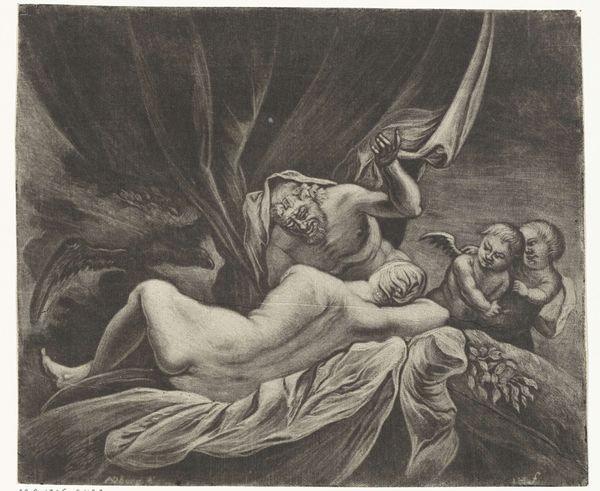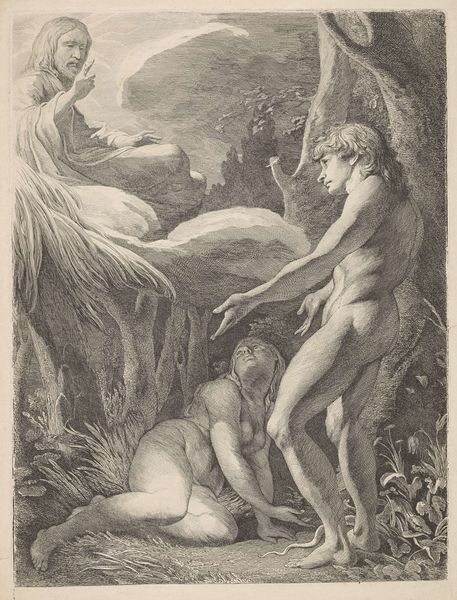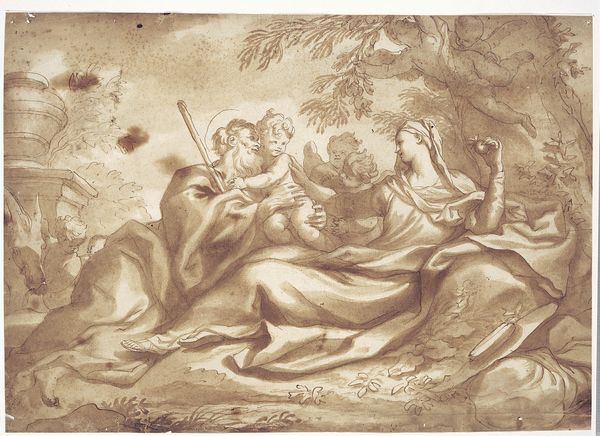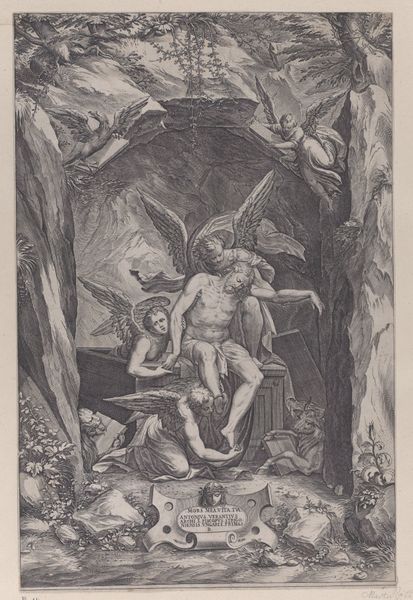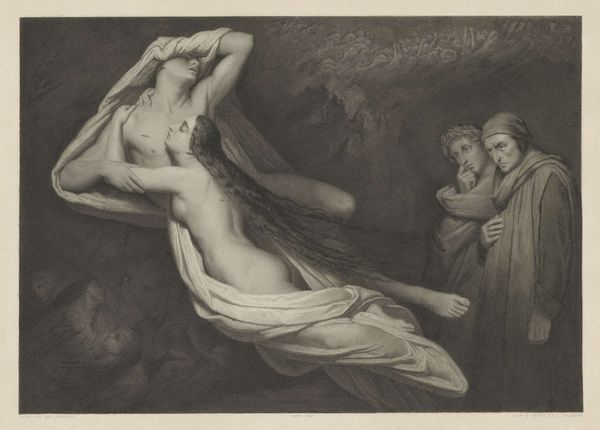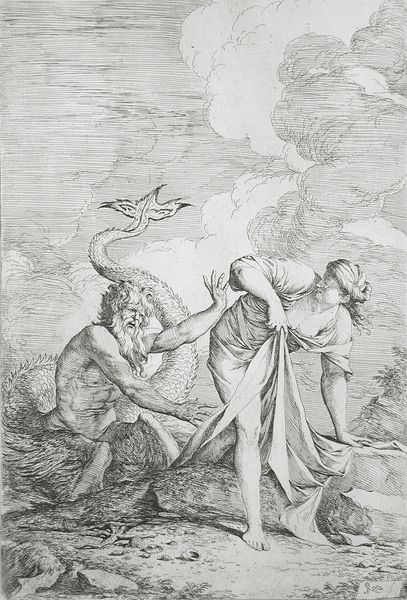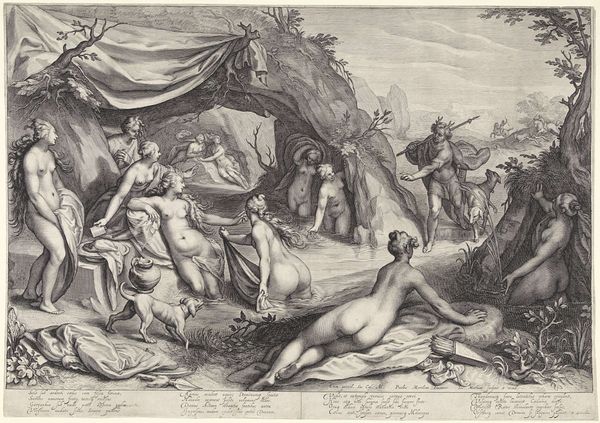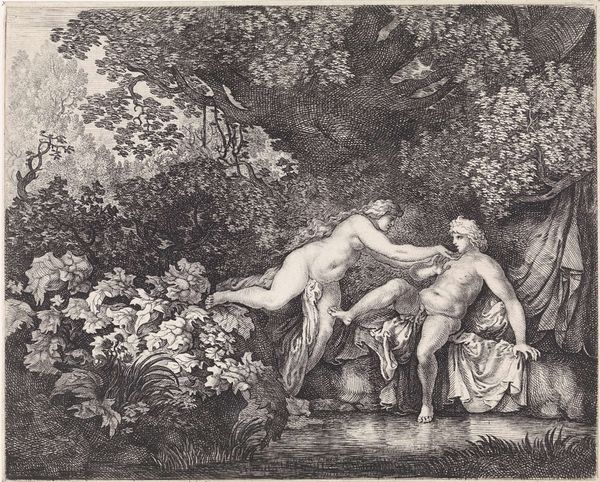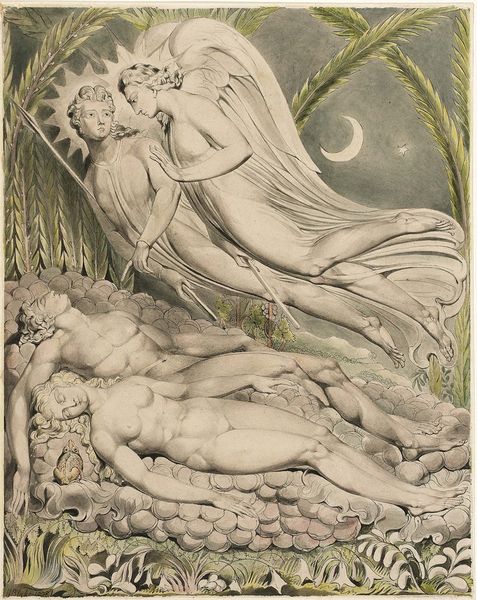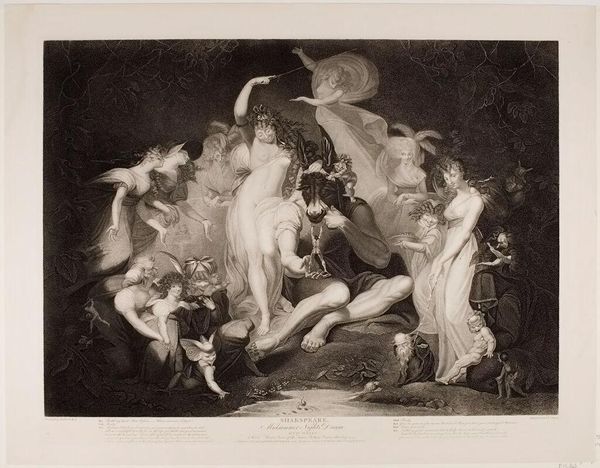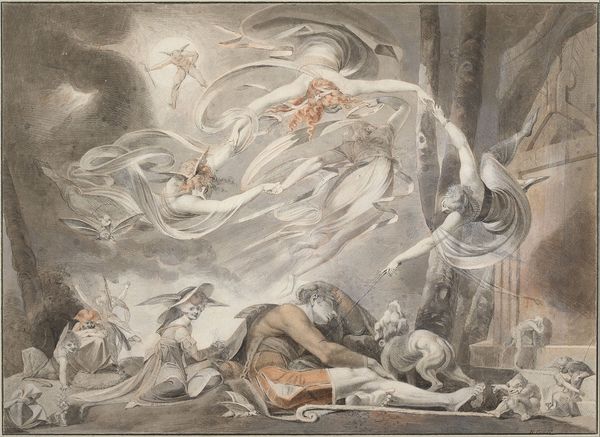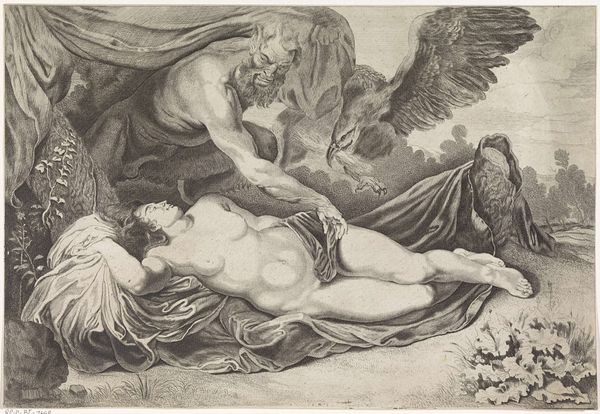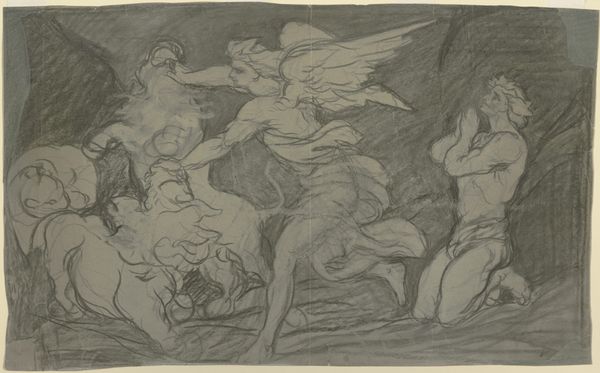
print, engraving
#
portrait
#
neoclacissism
#
allegory
# print
#
landscape
#
charcoal drawing
#
figuration
#
charcoal art
#
history-painting
#
academic-art
#
nude
#
engraving
Dimensions: height 515 mm, width 793 mm
Copyright: Rijks Museum: Open Domain
Editor: Here we have Giovanni-Martino dei Boni’s 1800 engraving, "The Death of Adonis", currently at the Rijksmuseum. The figures strike me immediately; they're positioned in a way that directs my eyes all over the work. How do you interpret this visual composition? Curator: Focusing on the intrinsic elements, consider the clear division of space. The artist uses stark light and shadow to create dramatic contrast and depth, thereby structuring the narrative within distinct planes. Observe how the static figures on the left create a grounding base, juxtaposed against the dynamic, flowing lines of the goddess figure in the sky. How do you perceive the function of the frame-like structure around the image? Editor: It almost boxes the scene in. Is that contrast between confinement and freedom intentional? Curator: The frame acts as a visual constraint, heightening the sense of drama and emphasizing the idealized forms within. Semiotically, the limited tonal range reinforces a sense of severity, while the meticulously rendered textures provide tactile interest. Consider how the distribution of light and shadow impacts the emotional weight of each figure and object in the composition. Editor: The goddess definitely dominates visually with her gesture and how bright she is, contrasting Adonis lying still in darkness. I guess the stark lighting reinforces Adonis's fate and the goddess's mourning. Curator: Precisely. By isolating key compositional features – light, line, and form – the engraving communicates its theme independent of historical or mythical contexts. It prompts reflection on the expressive capabilities inherent within the language of visual form itself. Editor: That’s an interesting point about purely analyzing it formally. I hadn't considered the work speaking independently, free of outside contexts. Curator: It underscores that even when art alludes to other realms, we have to explore its intrinsic power through the visual structure of the work itself.
Comments
rijksmuseum about 2 years ago
⋮
This print and the adjacent pendant represent two marble reliefs, which are now in the Museo Canova in Possagno. Depicted is the goddess Venus swooping down upon her beloved Adonis. The young mortal has just been killed while hunting and is mourned by his dogs, several nymphs, and the god of love Cupid. The interplay of light and shadow lend the print an extraordinary sense of depth.
Join the conversation
Join millions of artists and users on Artera today and experience the ultimate creative platform.
